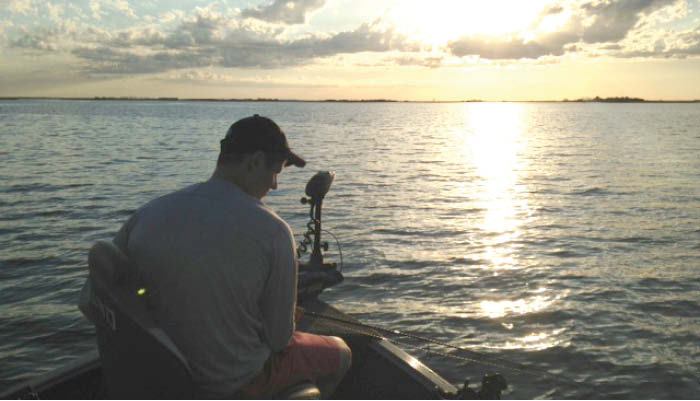Devils Lake, N.D.
Devils Lake is a disaster. It’s also wonderful.
It’s a disaster because the North Dakota lake began rising in 1993 and didn’t stop for 18 years. It’s wonderful because all that water, the miles and miles of water, has made Devils Lake into a fishery like no other.
Whether you view the water as terrible or wonderful depends on your perspective. Are you a farmer whose land was inundated and livelihood lost? Or are you a fisherman who views the endless blue as a playground of opportunity?
In 1993, Devils Lake’s elevation was 1,422.62 feet above mean sea level. When the lake reached its record elevation in June 2011, it was 1,454.3 above sea level. This was a vertical rise — think about that, a vertical rise — of almost 32 feet. Put 32 feet of water on your property and what do you have? Your house under at least 10 feet of water, most likely.
In 1993, Devils Lake covered 44,230 acres. At its peak elevation in 2011, it covered 211,300 acres. That’s more than 167,000 additional acres under water. To put this into perspective, imagine one-fourth of Clay County, Minn., (the county in which Moorhead is located) suddenly being under water. Permanently.
It’s been a disaster of remarkable proportions in terms of lost property, income, homes and the local economy. It’s also taken a massive toll on the mental health of those involved. I once had an affected farmer tell me, “Imagine if you woke up one day and you lost your home, your income and your retirement. Just like that. With no compensation. That’s what has happened to me.”
The soft underbelly of this story is the lack of action and compensation on behalf of those who lost their property to the water.
Every time a North Dakota city experiences flooding problems, the response from government (and rightly so) is to make the affected citizens and businesses “whole” again. It doesn’t always happen, but there is a flurry of action toward that goal. That hasn’t happened in the Devils Lake basin. Farmers whose land is underwater haven’t received compensation — and they’re still paying a percentage of property tax on land that might be 10 feet under water.
Devils Lake, it seems, is a black hole when it comes to attention and sympathy. Fargo is threatened by floodwaters in 2009 and we’re a national story. Farmers in Devils Lake are under water for two decades and nobody seems to know or care.
Of course, I’m being a hypocrite. As I write these words, I am in a lakeside cabin on the East Bay of Devils Lake with my boat hooked to my pickup. It will be in the water later today in pursuit of walleyes.
That’s the flip side of all the water in Devils Lake — the fishing is as good as it’s ever been and anglers are flocking here to chase walleyes, perch and pike. And they are spending lots and lots of money.
When a lake expands as much as Devils Lake did, and covers acres of trees and brush and gravel and everything else, it provides remarkable spawning habitat. From 1997 until now, the fish population in the lake has exploded. There are millions and millions (billions?) of walleyes, perch and pike in the lake.
Visit one of the lake’s public accesses and you’ll see license plates from North Dakota and Minnesota, of course, but also Iowa, Wisconsin, Nebraska, Illinois, Indiana and a half-dozen other states. It’s a destination vacation if you like to catch fish.
This is where the worlds cross. If you haul a boat around the roads in the Devils Lake basin, you’ll see dozens of flooded farmsteads, grain bins, implements and gravel roads. People lived in the farmhouses once, raising families and crops. Now the homes are uninhabitable, the land sitting idle under a foot or two or 10 of water. It’s good only for raising fish.
It’s a disaster. It’s wonderful. It just depends what your eyes see: Flooded farmland or walleye habitat.
(Mike McFeely is a talk-show host on 790 KFGO-AM in Fargo-Moorhead. Follow him on Twitter @MikeMcFeelyKFGO.)



